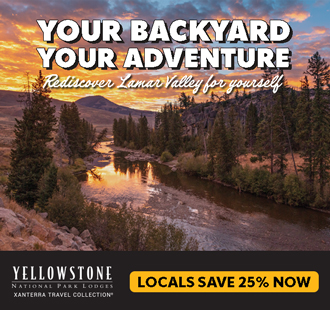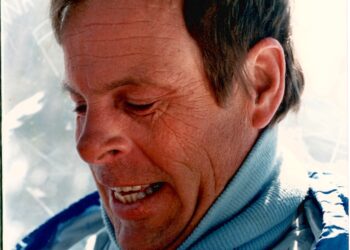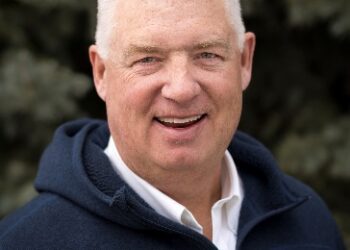Finding friends and inspiration on the river
By Jessianne Castle EBS ENVIRONMENTAL & OUTDOORS EDITOR
LIVINGSTON – The sky opened up and water fell from the heavens in a high basin tucked away in Paradise Valley. The rain dropped cold upon my neck, but it quickly passed, a cool kiss in the August sun. As rolling thunder and bright lightning jarred my bones, I embraced the heavy smell of damp and living soil.
From some 500 yards, I watched two grizzly bears eat caraway root, despite the downpour; I was as drenched as they were. Even with wet clothes, I didn’t shiver right away; I wasn’t cold at first. It must have been a warmth radiating from within, for my senses were thrumming in this place: The Greater Yellowstone.
It was midway through an immersive week-long field course, an experience that embraced the confluence of writing, adventure and the Greater Yellowstone Ecosystem. The course was one of four offered this year by Missoula-based Freeflow Institute, a fledgling organization founded last year in order to give emerging writers, artists and athletes the time, community and inspiration needed for thoughtful, creative work.
I was one of 11 participants, joined by Freeflow founder Chandra Brown and intern Steph Maltarich, as well as professional journalists and course instructors Alexis Bonogofsky and Elliott Woods. We gathered at Pine Creek Lodge south of Livingston on Aug. 12, a group of strangers hailing from across the state and nation, joined by the common interest of the pen. Many of us were professional journalists, writers and editors. A resident of Shields Valley north of Livingston, I was the only writer venturing into my proverbial backyard.
With the gentle babbling of Pine Creek as a backdrop, we began the course by listening to the weighty words of notable authors Terry Tempest Williams, Rick Bass and Doug Peacock. As the Perseids meteor shower shot sparks across the eastern sky, we were told to be fierce in our passions and embrace writing as a place to come together.
Following in the Freeflow mission—to take the practice of writing outdoors—we spent the following days on an intensive study of the Yellowstone River. Guided by Ashea Mills, a longtime veteran guide in Yellowstone Park, our party sojourned through the Black Canyon of the Yellowstone River, hiking 20 miles over two days in the hot and arid belly of the beast—the very headwaters of the Yellowstone, the last major undammed river in the Lower 48.
While traversing the boulder-strewn slopes and tight cliffs of the Black Canyon, we discussed the decades-old debate over whether to allow paddling on the scenic and treacherous Black Canyon whitewater, while allowing the conversation to flow, ebb and undulate to encompass questions over park visitation, recreational use versus conservation, and the question of what it means for a place to be wild.
Once through the park, we took to rafts and floated from Gardiner to Emigrant, accompanied by river guides Jim Hepburn and Nathan Herring. We made splashes around Yankee Jim’s formidable rapids and took pit stops in Gardiner and Tom Miner Basin, among others.
It was at Tom Miner Basin where we watched the grizzlies feast, accompanied by Daniel Anderson, whose family owns the Anderson Ranch. One of just a handful of landowners in the basin, the Andersons are well versed in the conservation conversation. They are largely a cow-calf operation that partners ranching heritage with sustainable living and are members of the reputed Tom Miner Basin Association that seeks to reduce predator conflict and maintain healthy stewardship of the land.
Daniel, a master’s student at the University of Montana in Missoula, hosted our group at his family home as a part of his larger Common Ground Project, which launched this year. Seeking to provide a platform for intentional, meaningful conversation, Common Ground is a place where groups can come to talk, with conversation framed around building community through learning, storytelling and experiencing a sense of place. The Common Ground ethos is something essential to the question of preserving the Greater Yellowstone.
On the eleventh hour—the last day of our campaign on Aug. 17—we arrived at Chico Hot Springs and the glory of naturally warm mineral hot springs. The warm water was an antidote to river weary soldiers, but it also became an elixir for the mind as we discussed strategies for conservation and a way of going forward. Those who’ve participated in a field course, an experiential learning journey, know the feeling of information overload.
Throughout the trip, Bonogofsky and Woods guided our party of dawning writers. For me, it was a pilgrimage of sorts: within a backdrop of a familiar place I met strangers and came out with friends as well as a deeper sense of place and home and what it means to protect those still wild corners on the map. At one point, Woods said something that remains etched in my mind: “Journalism is the first draft of history.”
It is now that our actions matter. And it is this place—the mountains, the rivers, the sagebrush plains, the hills, the valleys, the brooks and the springs—that needs our full attention. It is now that we must intentionally experience the Greater Yellowstone so that we might choose responsibly and shape what will be the Greater Yellowstone of tomorrow.














